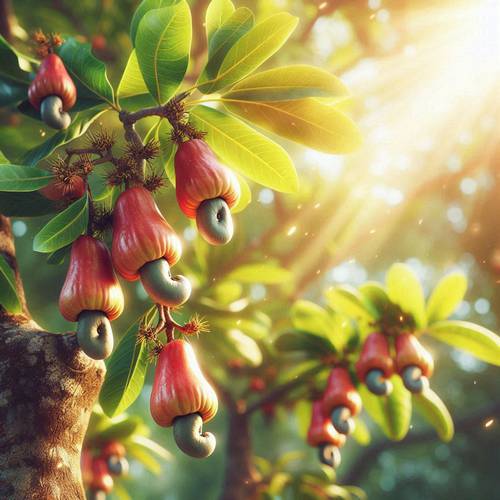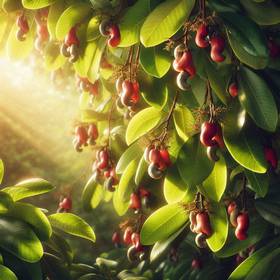History and Origin of the Cashew Tree
The cashew tree, scientifically known as Anacardium occidentale, has a fascinating history spanning centuries and continents. Native to the northeastern region of Brazil, the cashew tree was first cultivated by indigenous tribes for its versatile fruit and nut. It is believed that Portuguese explorers introduced the cashew tree to other parts of the world during the 16th century.
Today, cashew trees thrive in tropical and subtropical regions worldwide, primarily in countries like India, Vietnam, and Brazil. The tree's journey from a local staple in Brazil to a globally recognized crop highlights its resilience and adaptability, making it a valuable source of nutrition and livelihood for countless people.
Today, cashew trees thrive in tropical and subtropical regions worldwide, primarily in countries like India, Vietnam, and Brazil. The tree's journey from a local staple in Brazil to a globally recognized crop highlights its resilience and adaptability, making it a valuable source of nutrition and livelihood for countless people.
Scientific Classification and Botanical Features
The tree is a member of the Anacardiaceae family, which also includes mangoes, pistachios, and poison ivy. It is a medium-sized evergreen tree that can reach heights of up to 40 feet. The cashew tree's unique feature lies in its distinctive fruit, which is technically a "false fruit" or accessory fruit, and its true nut, which develops at the base of the fruit.
The cashew apple, as the false fruit is called, is pear-shaped and fleshy, with a sweet and slightly tart flavor. The cashew nut, encased in a hard shell, grows at the end of a kidney-shaped structure called the cashew nut. This shell contains a toxic resin called urushiol, which is similar to that found in poison ivy and requires processing before the nut can be eaten.
The cashew apple, as the false fruit is called, is pear-shaped and fleshy, with a sweet and slightly tart flavor. The cashew nut, encased in a hard shell, grows at the end of a kidney-shaped structure called the cashew nut. This shell contains a toxic resin called urushiol, which is similar to that found in poison ivy and requires processing before the nut can be eaten.
Unique Characteristics and Adaptations
Cashew trees possess remarkable adaptations that allow them to thrive in harsh environments. They are highly salt-tolerant, making them suitable for coastal regions. They can also withstand drought conditions and are often found in sandy or rocky soils. The cashew tree's unique growth habit, with its sprawling branches and dense foliage, provides shade and protection for the soil.
This contributes to the preservation of biodiversity in its native habitat. Furthermore, the cashew tree exhibits an interesting phenomenon known as "cauliflorous flowering," where flowers and fruits develop directly on the trunk and branches. This adaptation allows for greater pollination and seed dispersal, contributing to the tree's widespread success.
This contributes to the preservation of biodiversity in its native habitat. Furthermore, the cashew tree exhibits an interesting phenomenon known as "cauliflorous flowering," where flowers and fruits develop directly on the trunk and branches. This adaptation allows for greater pollination and seed dispersal, contributing to the tree's widespread success.



